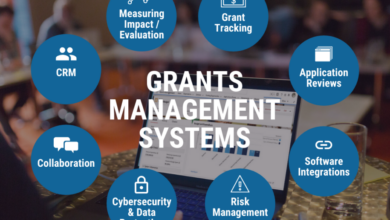How to Use Machine Learning for Financial Forecasting

Once the exclusive province of large enterprises, sophisticated financial forecasting relied exclusively upon a large team of competent professionals. Now, leveraging the power of artificial intelligence in financial forecasting helps small and mid-sized businesses cut costs and make game-changing predictions that put them ahead of the game.
Having actionable information about your company’s financial future allows you to avert any potential risks, make more intelligent investments, and establish reasonable goals and budgeting for the company. You could say that financial forecasting is the archetypal crystal ball in the business toolkit. However, in the digital age, traditional approaches to forecasting have long been exhausted. Let’s learn how machine learning meets this challenge and makes efficient and accurate forecasting a reality.
Limitations of Traditional Forecasting
One of the most obvious restrictions of traditional financial forecasting is limited data collection and processing models. For high-quality forecasting, first and foremost, the integration of data from different departments is necessary, as well as their operational processing in real time. With the volumes of data that companies now receive online, it’s almost impossible to do this manually, and automation usually includes strictly established algorithms that require a lot of effort to keep updated.
Assuming your company is collecting relevant information about customers, franchise locations, sales, and so on, you still need accurate modeling to anticipate the hidden costs of operating your business, which isn’t easy. For example, many companies forget about the extra costs of purchasing software licenses, hiring additional temp workers and auxiliary staff, or performing the odd jury-rigged repair.
Another challenge is human and organizational bias. Traditional forecasting processes usually require the involvement of analysts to compile data and interpret the results. So the outcomes can very likely be subject to the specialists’ own preconceptions. In addition, data processing takes a lot of time and doesn’t allow focus on the main task – understanding the factors that can affect the business. This is the reason why CFOs and business owners miss out on valuable insights that could influence decision-making and business performance in the future.
How Machine Learning Can Improve Financial Forecasting
Considering the problems we just covered in the last section, machine learning implementations can remove many obstacles in the financial forecasting process. Looking ahead, we can say that ML forecasting provides improved data processing, rapid adaptability to changes, and reduces the number of errors in forecasting.
An ML-based system can utilize both internal data (Sales, ERP, inventory) and external data (market share, OSINT, interest rates, weather, etc.) as part of its mission. While traditional methods can generate a forecast using only historical actual values, ML forecasting algorithms can take into account more diverse types of information. For example, a company can take data from a search engine to determine when consumers are most likely to search for their products to gain more insight into revenue peaks and troughs for better financial forecasting.
Here are some other benefits of applying machine learning to financial forecasting:
- ML algorithms can process much more data and discover patterns too complex for humans to observe, while traditional forecasting methods are limited by the amount of data that can be processed and analyzed.
- Machine learning provides more accurate forecasts due to the fact that the system is not subject to human preconceptions, emotions, and errors.
- ML forecasting ensures greater flexibility and easier adaptation to changes due to the fact that models can automatically adapt to new data sets.
Machine learning solves problems in financial forecasting in ways that aren’t immediately apparent to human reasoning or are beyond the sum of total intellectual bandwidth and free hours of human agents. Machine learning takes alternate routes and approaches through the challenge, such as pulling down data from the company’s regional weather patterns to predict how much additional expense will come as a result of weather-proofing, repair, or other seasonal operations as a result of inclement weather.
Where to Start Implementing ML Forecasting
The roadmap of integrating ML forecasting features into the fintech app development process generally involves the following stages:
- Defining your goals and determining what internal data is available.
- Determining any relevant external data, such as market reports and trends, product reviews, open source intelligence (OSINT), GDPs, weather and geodata, and anything else that will be of use to the model.
- Structuring, cleaning, and labeling your data if needed.
- Specifying which problems can be solved with the help of ML forecasting.
- Choosing a baseline model as a first reference point.
- Improving the ML model’s performance by adjusting the inputs or introducing more advanced and purpose-built models.
- Implementing the model into the production toolchain to start getting forecasting.
ML algorithms change the game when it comes to financial forecasting, but the outcome is only as good as your ability to effectively plan and implement the technology in your business. Partner with experienced AI engineers to achieve a high level of performance and accuracy of your forecasting models and get tangible outcomes for your business.
About the author:
Yevhen Krasnokutsky, AI/ML Solution Architect at MobiDev




